This post may contain affiliate links. If you click through a link and make a purchase, I may receive a commission at no additional cost to you. As an Amazon Associate, I earn from qualifying purchases. Read the full disclosure here.
Are you looking for a fun alternative to the same old treadmill? A high energy indoor cycle class is a great way to sweat it out to some feel-good music. Time flies when you’re having fun.
An indoor cycling class (sometimes called a spin class) comes with all the benefits of cardio exercise. Plus, it’s a low-impact workout to give your joints a break.
What could be so hard about riding a stationary bike? Just hop on and start pedaling. It turns out; a lot can go wrong. Enter: cycle class injuries.
How do you prevent cycle class injuries?
Stick around, and I’ll let you in on some simple indoor cycling tips for beginners.
These essential elements are great for both group cycle classes or if you’re at home on your Peloton bike.
- Learn how to set up your bike properly
- Wear the right shoes
- Get in the right training zones (for you)
- Upper body alignment mistakes during spinning class
- Lower body alignment mistakes during cycle class
- Don’t neglect cross training
- More indoor cycling tips for beginners
- Wear the right clothes
- Listen to your body
- Wrapping up
Disclaimer: This content is for educational purposes and is not medical advice. Read the full disclaimer.
Learn how to set up your bike properly
It all starts right here. An indoor bike differs from a regular exercise bike.
A poor spin bike setup will put you behind the eight ball to start. Incorrect bike settings put you in poor alignment and can cause injury. (Keep reading for the most common alignment mistakes!)
All bikes are different. Bring a few basics with you to get your perfect indoor ride.
There will always be the option to adjust the saddle height (seat height) and handlebar height. Then it becomes more fine-tuned with forward/back positions, and foot placement if you’re not using clips.
Find the optimal set up that works for your body. Even small adjustments can make a ride uncomfortable. Starting with the right set up can help prevent cycle class injuries.
There are plenty of resources out there, including YouTube videos, that will give you a quick crash course on how to set up your bike fit. I encourage you to check this out to have some background before you go into a studio.
Here’s a link to a quick five minute video about how to set up your bike.
If you’re new to the equipment, you should absolutely be asking the instructor to assist with bike set up. They don’t want you to get hurt either! They will be more than happy to help.
Pro tip: avoid arriving to class late, especially if you require assistance to set up. Not only will you miss the warm-up, which is crucial to get your body ready for exercise to avoid injury, it’s also disruptive.
If you do arrive late, make sure you ride easy for the first few minutes and don’t immediately jump into the current track.
Some studios may also have policies about allowing students to come in after class has started. Know the policies at your facility.
Wear the right shoes
Cycle shoes are game-changers; however, if you’re new, you won’t want to invest unless you know cycle class is something that will stay in your routine. I totally get it.
If you’re not wearing cycling shoes, you will need to wear sneakers with a sturdy sole to support your foot during standing positions. You’ll also need to make sure your foot is securely strapped into the cage.
Sneakers with a thinner/more flexible sole or a barefoot type feel are not good options for a cycle class. As you stand, the sole will bend and place stress through your forefoot.
When cycle class makes the cut into your regular workout routine, I highly suggest investing in cycle shoes. My first pair lasted over five years, with frequent usage. You can securely clip in to have a stable base for your ride and use muscles more efficiently.
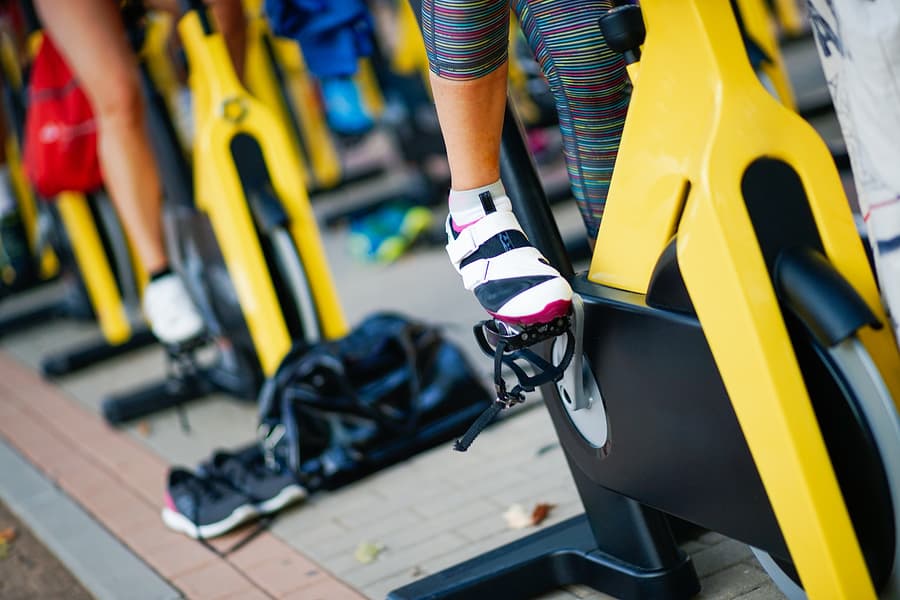
How do cycle shoes work your muscles more efficiently?
A clipped in experience allows you to utilize your hamstrings and glutes more effectively during riding and allowing that power to be transferred to the pedals.
The entire cycle motion involves a push and a pull. In sneakers, the force ends up being more of a push (utilizing more quads). Clipping in allows you to push and pull more evenly for a smoother pedal stroke.
Cycle shoes also provide a more stable base during standing and, in general, make you feel like you have more control during your ride.
Get in the right training zones (for you)
Cycle classes are choreographed to the beat of the music, which is part of the reason they are so addicting.
Indoor riding isn’t quite the same as outdoor cycling, so this structured workout incorporates resistance and cadence variety throughout the class for a heart-pumping calorie burn.
Adjusting your bike to the right resistance throughout class is very important not only to maximize your workout but to keep you safe.
Too little can hurt you; too much can hurt you. Finding that sweet spot training for your fitness level is a must.
Instructors should be providing parameters for resistance. Too little resistance can leave you spinning out of control (which can be a recipe for injury).
Bouncing in the saddle is a clue there’s not enough resistance. Too much resistance can over stress muscles, tendons, and joints.
Remember that suggested parameters are just that, suggested. If something doesn’t work for you, you can tweak it until it does.
Spinning guidelines recommend 60-80 RPMs for a hill and 80-110 RPMs for a flat. Always aim for a smooth circular pedal stroke, not a choppy motion, which can indicate you have too much resistance.
Why am I telling you this? Because instructor quality varies.
You should have a basic understanding of how to keep yourself safe and avoid cycle class injuries.
And no, I’m not a fan of classes that incorporate moves such as push-ups on the handlebars, squatting down while standing, or pedaling and lifting light weights. (Some light weights are OK if you can get into proper position while still sitting on a bike.)
Because the fitness industry is great at trying to make everything something it’s not. When you combine too many things at once, it takes away from everything.
I’ve even seen some instructors doing kickboxing punches with weights while seated on the bike. I can’t even begin to describe how useless this is unless your goal is an injury.
A hallmark of injury prevention for kickboxing is to rotate your whole body, including the hips and legs, to avoid injuries. You can’t do that when your lower half is fixed to a bike. This whole set-up is like asking for a shoulder, neck, or back injury.
At the risk of ruffling some feathers (fancy cult-like cycling communities), the only thing you’re doing is setting yourself up for injury and taking away from the quality work you could be doing in a cycle class.
Get your push-ups, squats, and weights elsewhere when you can focus on these movements to actually make it worth your time.
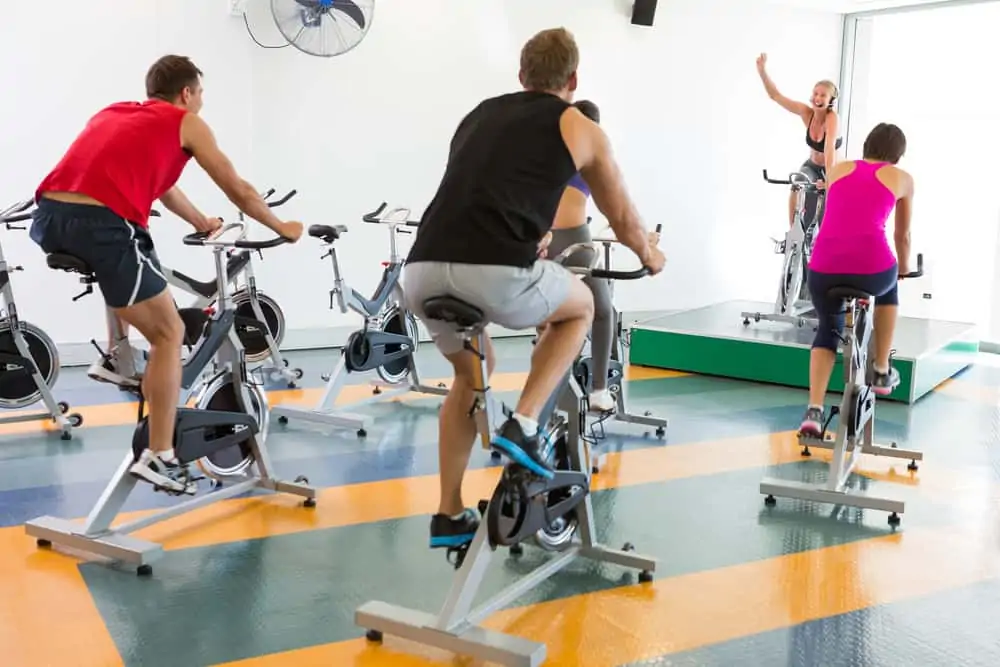
Upper body alignment mistakes during spinning class
Rounding your back
Rounding your back changes the posture for your entire body. The optimal position is hinging from the hips, keeping the back straight and the shoulders relaxed and down.
Why? Not only might you end up with some back pain, the rounded position pushes the head and neck forward, causing you to have to tilt your head upward. Keep your head in line with your spine.
From a breathing stand point, rounding the back and closing off the chest will not allow you to breathe as deeply and get all that valuable oxygen exchange to elevate your heart rate and improve your cardiovascular workout. Which might be why you stepped into that cycle class in the first place.
Let’s take it further down the chain. Rounding the upper back then causes the pelvis to tilt posteriorly, rounding the lower back. If you’re thinking, “Hey, I do posterior pelvic tilts all the time as part of my core workout!” This isn’t the time for that.
By hinging from the hips, you’re creating a strong, functional base for your legs to push and pull, instead of just tugging on your back. This position allows you to engage your core and other major muscle groups more effectively.
A little rusty on your anatomy? No worries! Make sure you read Lower Body Muscles and The Skinny On Core Strength to get more familiar with how the body works together.
Handlebar death grip
Keep a light touch on the handlebars with a slight bend in your elbow in all positions to allow your body to move freely.
Keeping your shoulders by your ears
For best alignment, relax your shoulders and keep them down. Additionally, try to keep your elbows in, don’t allow them to flare outwards.
Pro tip: Bring towels for the handlebars. Cycle class can get really sweaty. No one wants to slip. That would be an embarrassing cycle class injury.
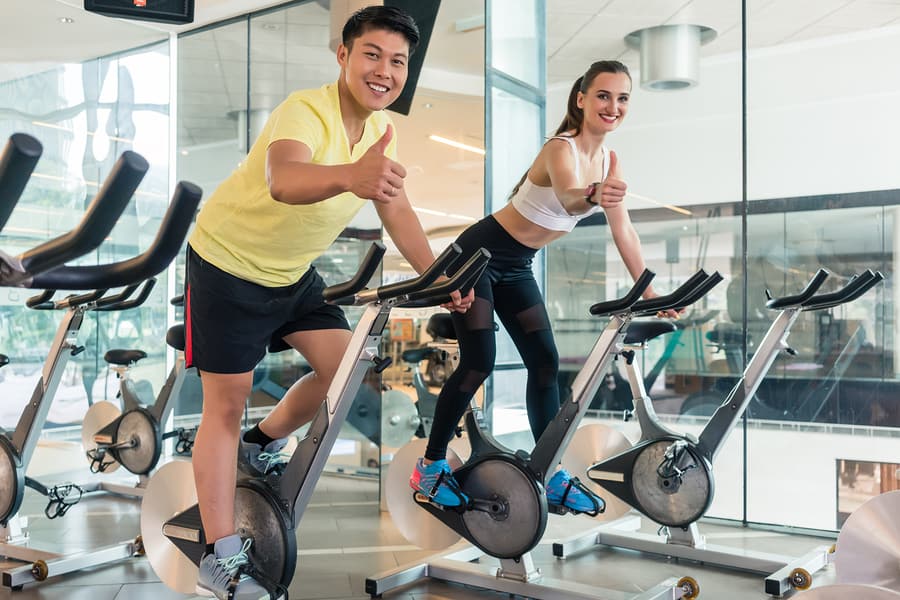
Lower body alignment mistakes during cycle class
Allowing your knees to drift
You may hear instructors use the cue “knees and toes straight ahead.” This cue is to maintain your hips/knees/feet in proper alignment not only to get the best workout but to avoid causing injury as well.
When you look down, you should see your knees and toes tracking in the same line.
Difficulty maintaining this alignment can indicate weakness at the hip, something you’ll want to get addressed if cycling is an interest of yours.
Common cycle class injuries from improper lower body alignment include IT Band Syndrome and Patellofemoral Pain Syndrome (PFPS).
Pointing your toes down as you pedal
Keeping your foot neutral and pushing through the ball of the foot will allow you to use your larger muscle groups more efficiently for flat roads and climbs.
If you’re not using clips, line up the ball of the foot with the center of the pedal. Depending on the size of your foot, this may mean your toes do not reach the front of the cage. Confirm foot placement with the instructor at your facility as all bikes are slightly different.
Don’t neglect cross training
Cycling indoors is a great workout. But you can’t only cycle.
Because of the repetitive nature of cycling, too much can cause overuse injuries.
I love cycle classes, but at one point, my left hip made it clear that back to back days were not going to work. Make sure you’re spacing out your classes and working in some cross-training activities.
Yoga can help maintain excellent flexibility and mobility as well as encourage movements that cycle positions lack.
Strengthening is always a compliment to other activities.
Due to the repetitive forward/back nature of cycle movements, muscle groups such as the hip abductors can be easily ignored. It’s essential to maintain strength in all major muscle groups to avoid injury.
More indoor cycling tips for beginners
Hydrate
A cycle class is a sweat session. Always have a large bottle of water with you. I usually have a 32 oz. bottle and finish it by the end of class. Cycle rooms can be hot and humid any time of year, so be prepared.
Contrary to popular belief, sweating and working out in an overly heated environment doesn’t give you a better workout. It takes away from your workout because now your body has to devote more energy to cooling you down and making sure you don’t pass out.
But my heart rate goes up more when it’s hot, so I burn more calories!
That’s a response from the stress of the heat (body trying to cool down), which is different than increasing heart rate purely through exercise intensity. And no, sweating is not an accurate tool for measuring the intensity of a workout.
Wear the right clothes
Again, cycling gets hot real fast. Like nasty, humid, sweatbox hot. Gross. Dress like it’s going to get sweaty, so you don’t find yourself faint and overheated.
Wide leg pants and flared pants are also not a great idea. They will flop around and be distracting, plus the risk of getting caught in the bike.
Listen to your body
I can’t stress this enough.
No matter what the instructor says or what the rest of the class is doing, you should always listen to your body. If you hate jumps or seated climbs, you can always modify and do what your body needs. Let the instructor know ahead of time if you will be modifying if that makes you feel better.
You are not competing with anyone.
There will always be someone in the class who’s willing to turn blue in the face and practically fall off their bike, don’t be that person. To be safe, you should probably send this article to them.
Work smart and avoid cycle class injuries.
Wrapping up
Indoor cycling classes are a fun calorie burn, but there are many things to be aware of to avoid cycle class injuries.
Use these simple tips to rock your next indoor cycling workout like a pro and prevent injuries.
Featured image credit: Wavebreak Media Ltd. / bigstockphoto.com
References
Chavarrias M, Carlos-Vivas J, Collado-Mateo D, Pérez-Gómez J. Health Benefits of Indoor Cycling: A Systematic Review. Medicina (Kaunas). 2019;55(8):452. Published 2019 Aug 8. doi:10.3390/medicina55080452
Schulz SJ, Gordon SJ. Riding position and lumbar spine angle in recreational cyclists: A pilot study. Int J Exerc Sci. 2010;3(4):174–181. Published 2010 Oct 15.
Shaulov N and Lufi D. Music and Light during Indoor Cycling. Perceptual and Motor Skills. 2009;108(2):567-607. https://doi.org/10.2466/pms.108.2.597-607
Streisfeld GM, Bartoszek C, Creran E, Inge B, McShane MD, Johnston T. Relationship Between Body Positioning, Muscle Activity, and Spinal Kinematics in Cyclists With and Without Low Back Pain: A Systematic Review. Sports Health. 2017;9(1):75–79. doi:10.1177/1941738116676260
Bini, Rodrigo & Hume, Patria & Kilding, Andrew. (2014). Optimizing Bicycle Configuration and Cyclists’ Body Position to Prevent Overuse Injury Using Biomechanical Approaches. 10.1007/978-3-319-05539-8_8.

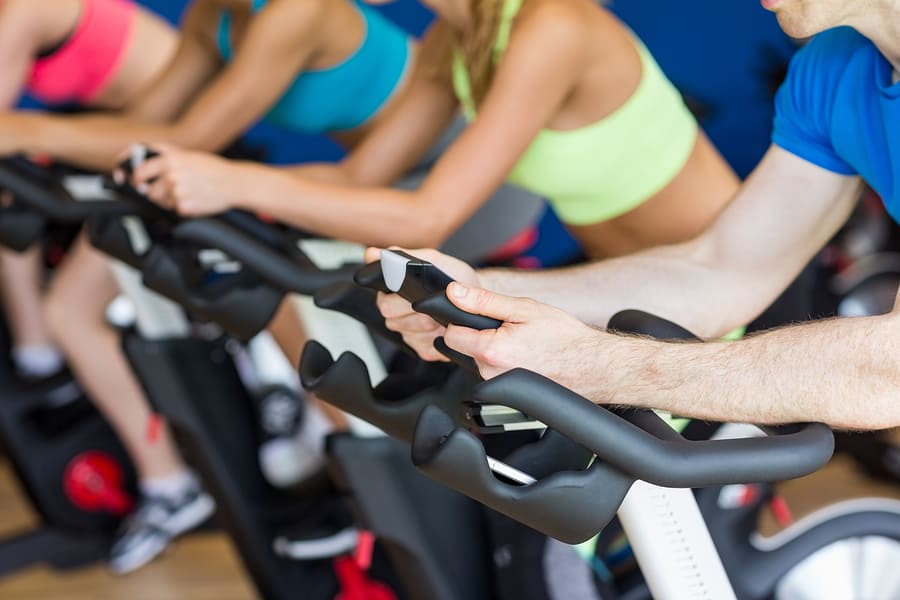
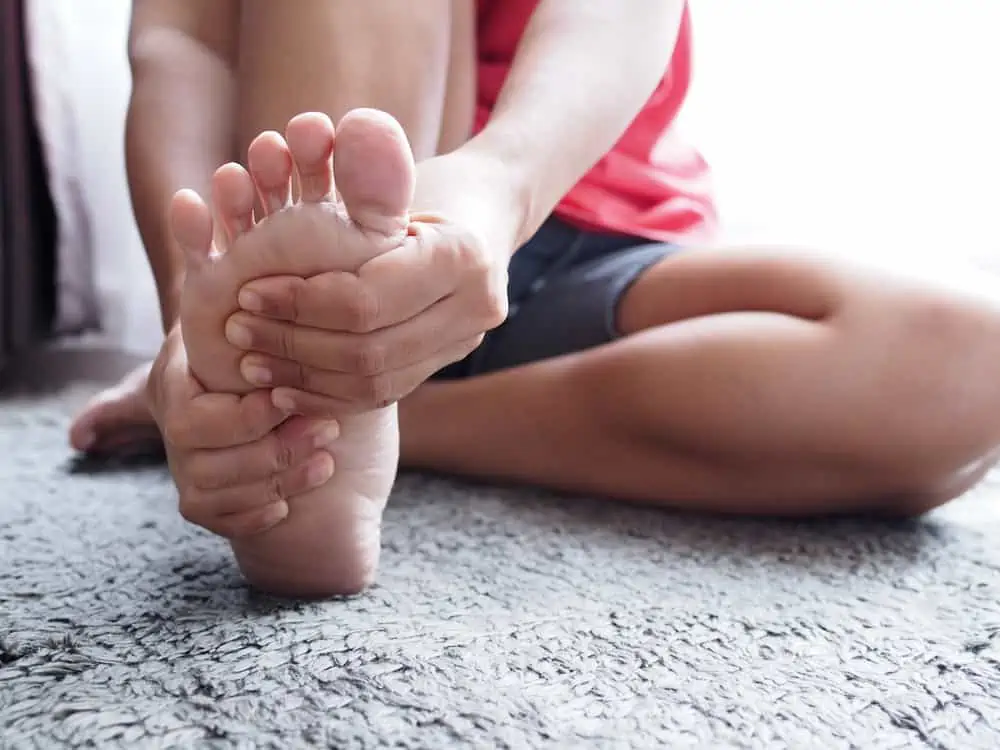
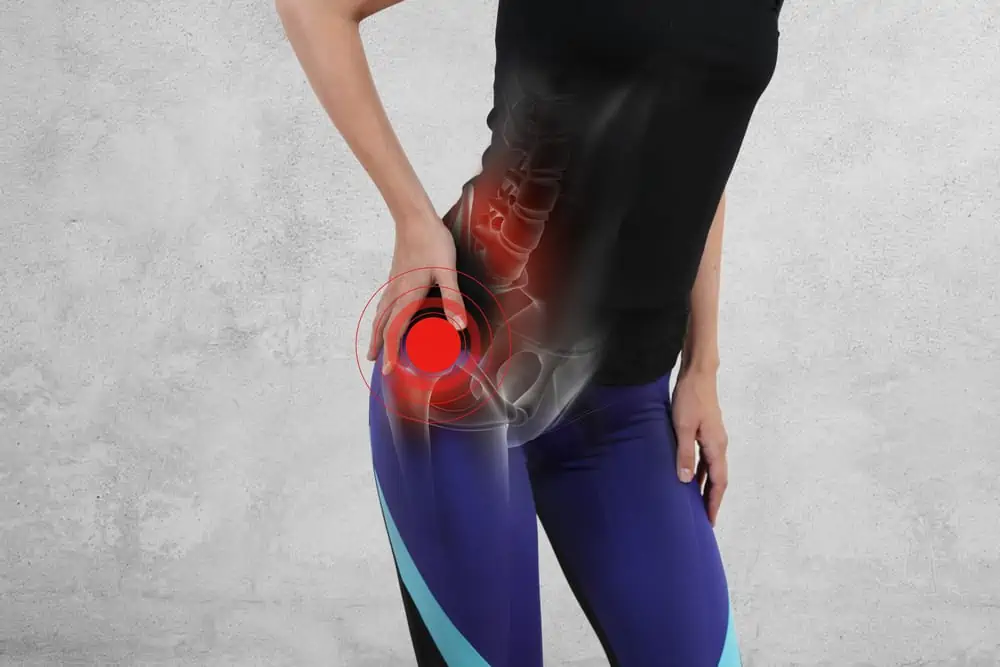
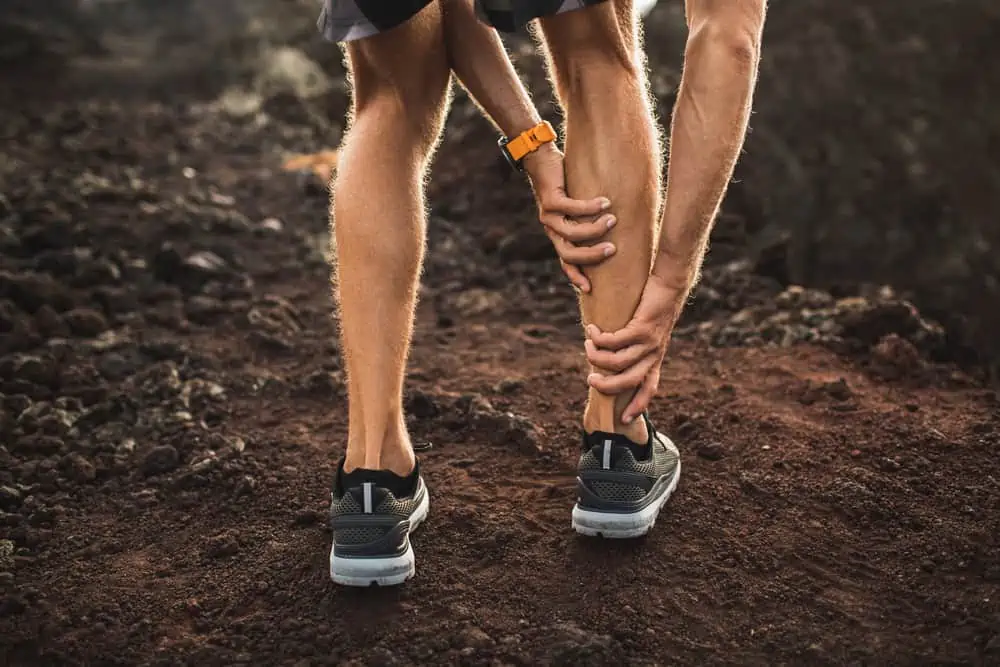
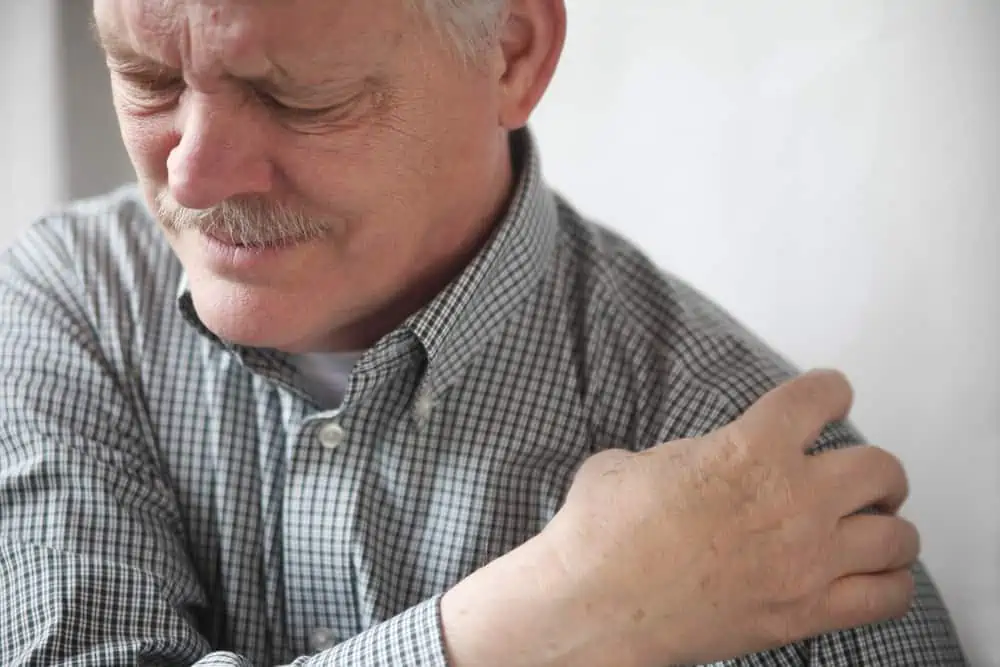
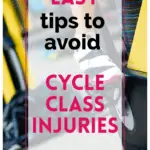
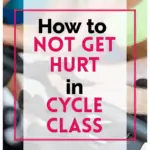
Who in the world knew that the phrase “it’s as easy as riding a bike” was actually a myth! Geez… ?
LOVE LOVE LOVE the article, and all the excellent tips!
Thanks Maura! ?
Haha, thanks so much for reading. I’m glad your enjoyed it!